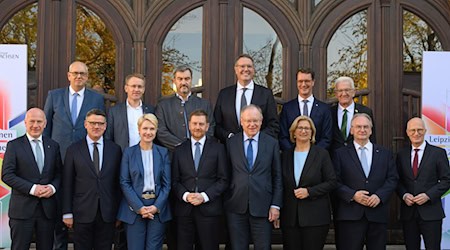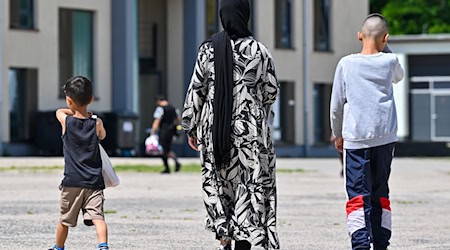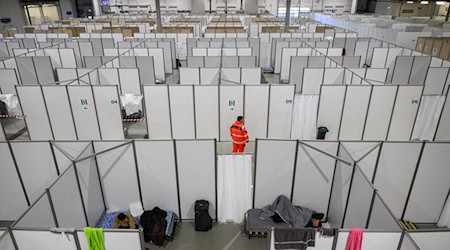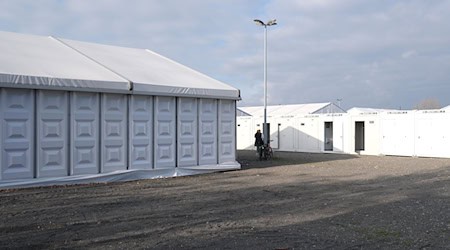The asylum and migration issue is a complex problem that has preoccupied the European Union for years. Previous discussions and approaches have been translated into a four-phase plan in this article to provide a systematic, scientific analysis of the feasibility, advantages and disadvantages of each approach.
Phase 1: Dealing with asylum seekers already in the EU
The first phase focuses on people who have already arrived on European soil. The question is how these people should be dealt with in order to save costs on the one hand and promote integration on the other.
Reduction of social benefits
Suggestion: the total social benefits (citizen's allowance, child benefit, housing benefit) for refugees should be reduced to a maximum of 50 percent, compared to what a person or family could net on a 40-hour week and minimum wage.
- Pro: The cost savings for the state could be significant, which could fund other social projects.
- Contra: The reduction of benefits could significantly reduce the quality of life of asylum seekers and lead to social marginalization.
Counterpart for cash benefits
Proposal: Social benefits (citizen's allowance, child benefit, housing benefit) should be compensated by work performance in society.
- Pro: This work performance can contribute to the integration of refugees and serve the common good.
- Contra: The administration of this system could be complicated and costly. In addition, the question of ethical justifiability.
Work opportunity after completed asylum procedure
Proposal: People with completed asylum procedure should be allowed to work immediately.
- Pro: The rapid integration into the labor market promotes economic independence and relieves the social system.
- Contra: There is a risk of displacement of locals in the lower wage segment, which could lead to social tensions.
Consequential deportation
Proposal: People who abuse their right of residence or have no prospects of staying are deported.
- Pro: Increase social acceptance. More resources for other refugees and asylum seekers.
- Contra: People could be deported who have already integrated well and have a job.
Dealing with asylum seekers who are already in the EU is a complex challenge. One approach could be to reduce cash benefits for refugees so that total social benefits, including housing, are no more than 50 percent of what a comparable person or family could net while working a 40-hour week at the minimum wage. In return, a quid pro quo could be required in the form of socially useful work. This work should be the hourly equivalent of the minimum wage and could be around a 20-hour week. In addition, people with completed asylum procedures should be given the opportunity to go to work immediately. Those who do not want to work could receive benefits reduced by 10 percent every two months in stages. To avoid unequal treatment, these rules should apply to everyone living in Germany and people.
Phase 2: Dealing with asylum seekers within Europe
The second phase deals with the fair distribution and care of asylum seekers within the EU. Here, the aim is to harmonize the social benefit systems of the individual countries and create solidarity-based mechanisms.
Harmonization of social benefits
Proposal: Social benefits should be harmonized across the EU.
- Pro: A uniform system prevents "asylum shopping" and distributes the burden of social benefits evenly.
- Contra: Different economic conditions in the EU countries make a uniform social benefit difficult to implement.
European Asylum Fund
Proposal: An asylum fund into which all EU countries pay should be established.
- Pro: This would distribute the financial burden of asylum policy among all member states and could thus promote solidarity.
- Contra: Such a fund requires close political coordination and could favor countries with stronger economies.
The handling of asylum seekers who are already within the European Union requires a coordinated strategy between member states. One possibility would be to harmonize social benefits across European countries to minimize incentives for secondary migration within the EU. In parallel, a distribution key could be established for all EU countries to share the burden of receiving asylum seekers more equitably. To support this financially, a European asylum fund could be established. All EU countries would pay into this fund proportionately, based on their economic strength and the number of asylum seekers expected. Each EU country that takes in asylum seekers would then receive money from this fund. Should an EU country take in fewer asylum seekers than provided for by the distribution key, that country would pay a set amount for each shortfall per fewer asylum seekers taken in.
Phase 3: Controlling the EU's external borders
The third phase aims to make entry into the EU safer and more efficient. This includes technological and organizational solutions that ensure the protection of the EU's external borders on the one hand and raise ethical and legal issues on the other.
Proof of origin
Proposal: Only people with a valid proof of origin should be processed.
- Pro: This would speed up the processing process and increase security.
- Contra: People fleeing from countries with poor infrastructure could be disadvantaged.
Satellite-based AI surveillance
Proposal: Introduction of AI-based surveillance of the EU's external borders.
- Pro: Technically efficient solution that enables seamless surveillance.
- Contra: Significant ethical and legal concerns, including the possible misuse of data.
Controlling the EU's external borders presents a particular challenge, for which various measures are being discussed. One possibility would be that only people with a valid proof of origin would be processed further. People without ID or passports would be returned to the coast of origin. To implement this efficiently, drone and satellite-based AI monitoring of all boat traffic could be used. Upon arrival, registration of boats including occupants would take place. For those with no prospect of asylum, immediate repatriation to the country of origin would be envisaged.
Phase 4: Asylum procedures in countries of origin
The fourth and final phase deals with the possibility of conducting asylum procedures already in the countries of origin. While this measure has the potential to significantly reduce illegal entry, it poses logistical and diplomatic challenges for the EU.
Asylum Centers
Proposal: establish asylum centers in countries of origin or safe neighboring countries.
- Pro: This could reduce illegal migration.
- Contra: There are enormous logistical and diplomatic challenges.
Dealing with asylum procedures in countries of origin could serve as an alternative solution. In cooperation and implementation with the UNHCR, asylum centers could be established in the respective countries of origin. There, people would have the opportunity to apply for asylum for the EU as a whole, rather than for a specific EU country. If there is a positive prospect of asylum, the asylum seekers would be taken by scheduled flight to their assigned EU country and housed there. From that point on, the approach from Phase 1 would then apply to deal with asylum seekers already in the EU.
Conclusion
In this article, we have looked at a four-phase plan for resolving the asylum and migration issue in the European Union. This plan ranges from the integration of asylum seekers already in the EU to the implementation of asylum procedures directly in the countries of origin. Through the different phases, the plan offers a range of starting points and possible solutions. However, these also leave room for numerous ethical and logistical issues that should be considered in the political and social discussion.
A central point of criticism is the reduction of social benefits for asylum seekers, which could lead to further social marginalization. This marginalization could not only make life more difficult for those affected, but also increase social tensions. The use of satellite-based AI surveillance technology could be equally problematic. Here, urgent questions arise with regard to data protection and ethical defensibility, which have not yet been sufficiently clarified.
In conclusion, the article aims to present the multi-layered and complex nature of asylum and migration policy in the EU. It becomes clear that simple solutions are usually not sufficient and that a thorough examination of the various aspects and challenges of the issue is necessary. The article is therefore intended to serve as an impetus for a broader, more informed discussion in politics and society.










